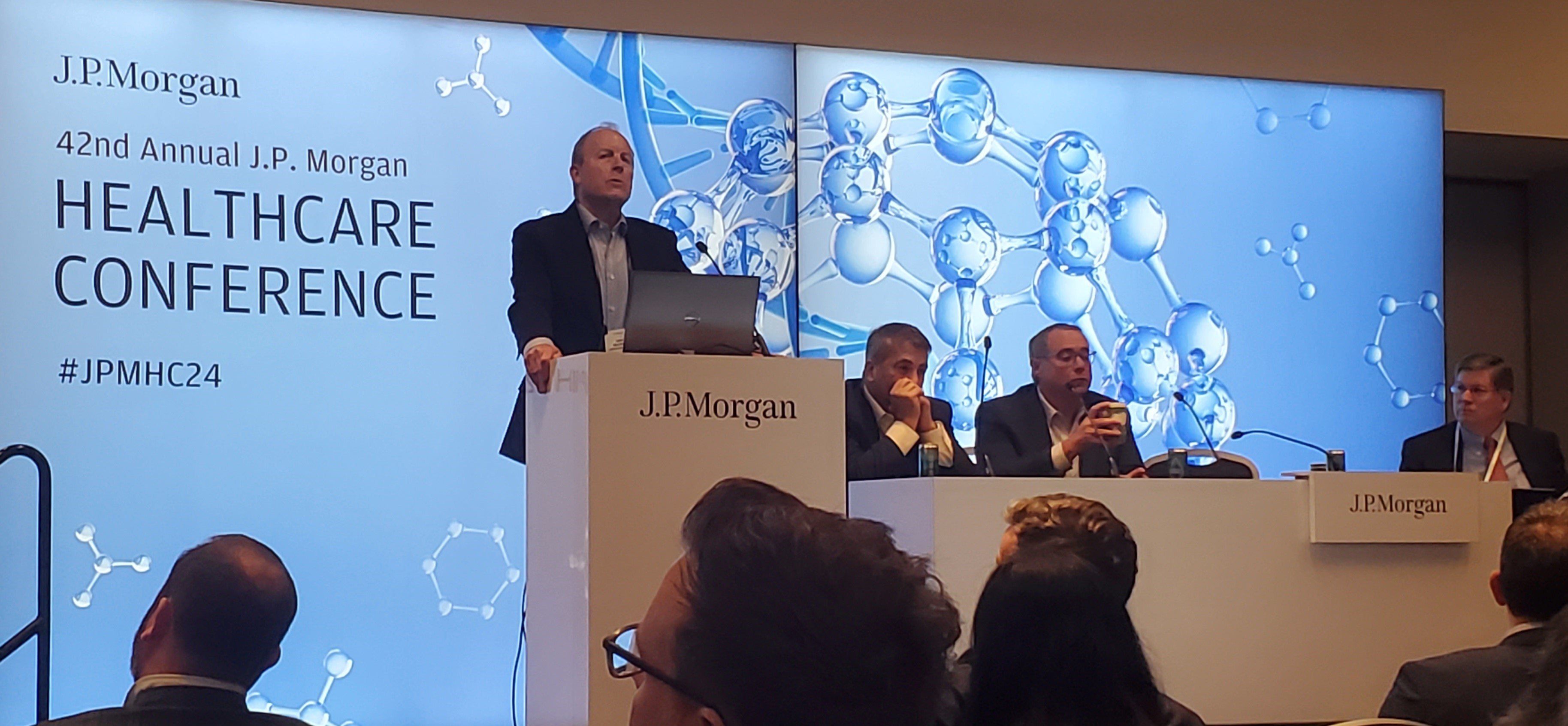JPM24: Jefferson Health says LVHN merger would double its insurance business within 2 years
2024-01-09
并购

Preview
来源: FierceHealthcare
To diversify its revenue stream, the Philadelphia-based nonprofit wants to make health insurance a much larger part of its business. A proposed merger with Lehigh Valley Health Network could help Jefferson Health reach its five-year growth target in less than half the time, executives said at the J.P. Morgan Healthcare Conference.
SAN FRANCISCO — Jefferson Health’s newly announced integration with Lehigh Valley Health System (LVHS) didn’t begin as a merger discussion.
Rather, executives told attendees at the J.P. Morgan Health Conference on Tuesday, the nonprofits were initially exploring a plan to white label Jefferson’s government-focused health plan in Pennsylvania’s Lehigh Valley area.
“They said, ‘Well, what about a full asset merger?’ recalled Jefferson Health CEO Joe Cacchione, M.D.. “They had been in the market previously, [and now] we think we can get our projected five-year growth in the health plan [completed] within 18 to 24 months by doing the deal” with LVHS.
That expansion into a fresh market and a chance to align the payer business with LVHS’ care delivery services falls squarely into the 17-hospital academic system’s strategic vision to increase resiliency and “double down” on insurance, its executives said.
As of 2023, Jefferson Health Plans account for 22% of the organization’s revenue mix, while its Thomas Jefferson University claims 6% and care delivery represents 72%, according to the system’s presentation to attendees. Now, Jefferson wants to double both the health plan’s revenue and covered lives within five years.
“Lehigh presents an opportunity to short-circuit that and go a lot faster,” Jefferson Health EVP and Enterprise Chief Strategy and Administrative Officer Chief Mark Whalen said.
The insurance business will be “an important growth lever” for all of Jefferson’s dealings in the coming years, he continued. Integrating care delivery and financing “affords us the opportunity to invest in the things that make the biggest impact on those we serve” and remove “redundancies” and “waste” that arises when both sides aren’t aligned, he said.
While Chief Financial Officer John Mordach hesitated to name an ideal revenue ratio between delivery and coverage, he noted that “disproportionately” growing the plan in the coming years will also make Jefferson a more attractive partner to potential provider partners.
For Cacchione, the most important benefit is protecting Jefferson and its care delivery business from unexpected disruptions like COVID-19.
“The idea that you’re locked onto fee for service – that ship sailed, and I think many of us think that way,” he said. “It’s really diversifying revenue for us not to ever have to be exposed, as we all were in COVID when fee-for-service went through the floor and people were left holding the bag in many ways and the insurers were riding high. … That will help us weather storms that we can’t anticipate.”
For now, the executives said they plan to focus Jefferson Health Plans’ growth in line with its governmental program expertise. Specifically, they plan to expand more heavily into Medicare Advantage and the exchange before digging deeper into commercial.
Meanwhile, Jefferson Health is approaching the potential integration with LVHN with the “muscle memory” of its other string of recent mergers, Cacchione said. While the system works to “rationalize” its current footprint and streamline its assets (for instance, two transplant programs within five miles of one another), it will also be connecting its offerings with LHVN’s “more traditional” service lines, he said.
Back at home, Jefferson is also interested in fleshing out its presence outside of the hospital – an oft-cited strategy among the nonprofit systems presenting this week at the conference.
“We have a lot of opportunity to grow our ambulatory footprint, but in a very purposeful way where we are underpenetrated on the clinical programs we’re trying to grow,” Mordach said. Southeast Pennsylvania and South Jersey are “not necessarily a growing market, but we have had very underpenetrated areas that we want to grasp and invest in our ambulatory footprint.”
更多内容,请访问原始网站
文中所述内容并不反映新药情报库及其所属公司任何意见及观点,如有版权侵扰或错误之处,请及时联系我们,我们会在24小时内配合处理。
机构
适应症
靶点
-药物
-来和芽仔聊天吧
立即开始免费试用!
智慧芽新药情报库是智慧芽专为生命科学人士构建的基于AI的创新药情报平台,助您全方位提升您的研发与决策效率。
立即开始数据试用!
智慧芽新药库数据也通过智慧芽数据服务平台,以API或者数据包形式对外开放,助您更加充分利用智慧芽新药情报信息。




